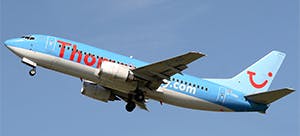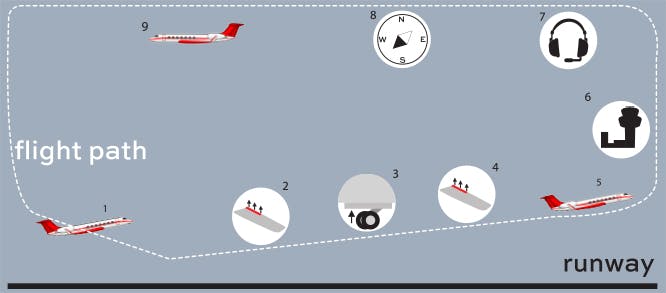Ask The Pilot: What does it mean when an aircraft is ‘going around’?

Often as a pilot, when meeting new people they will recount their worst or most frightening flying experience to me.
I guess it’s much the same as sharing your aches and ailments with a doctor. Or talking about your messy divorce when you meet a lawyer. The negatives always seem to come out first.
One of the most frequent stories I hear is a variation on the following: The aircraft was coming into land and all of a sudden the pilot put full power on and aborted the landing. This was followed by an announcement from the flight deck that the order to ‘go around’ had been received from Air Traffic Control – as the previous aircraft landing had not cleared the runway.
It’s something that seems to really throw people in the passenger seats. However ‘go arounds’ are not a dangerous procedure. In fact they are the safest possible manoeuvre a pilot can make, if there are any doubts about the landing.
What happens when a pilot goes around?
When on the final approach phase of a flight, if a pilot is unsure a safe landing is possible, they will initiate the following standard operating procedure:

1. Apply full power
2. Flaps to take off
3. Gear up
4. Flaps up
5. Fly the standard missed approach procedure
6. Inform Air Traffic Control
7. Inform and update cabin crew
8. Plan next landing
9. Update passengers
Why would an aircraft go around?
The go around is a safe procedure that takes an aircraft away from the ground and into a safe and stable flight envelope (or environment). The most common reasons for an aircraft going around are:
- Previous landing aircraft still on the runway
- Runway incursion – an aircraft or vehicle on the runway
- Wild animals – Often deer in Europe and the States (more about animals on runways)
- Cross winds – Each aircraft has landing wind conditions that should not be broken
- Unstable approach – For many reasons the aircraft might not be on the ideal glide slope or at the correct landing speed
Often pilots will not immediately inform the passengers as to why the aircraft has gone around. This is because informing the passengers comes at the very bottom of the ‘go around’ checklist (in the nicest – and safest – possible way).
Be assured that your Captain will update you as soon as the other, more important, checks have been actioned. In some cases the passengers will only be informed after the aircraft lands (from the next approach).
So the next time your landing aircraft suddenly stops descending, the engines roar and the aircraft points steeply back into the air, do not be concerned: Your pilots are flying a very safe procedure.
If you have any other flight safety related questions, please do ask our expert Operations team (many are pilots), available 24hrs on +44 1747 642 777.
Related content

How much luggage can I take on a private jet?

Our latest exclusive Jet Card event at Dom Pérignon Maison



